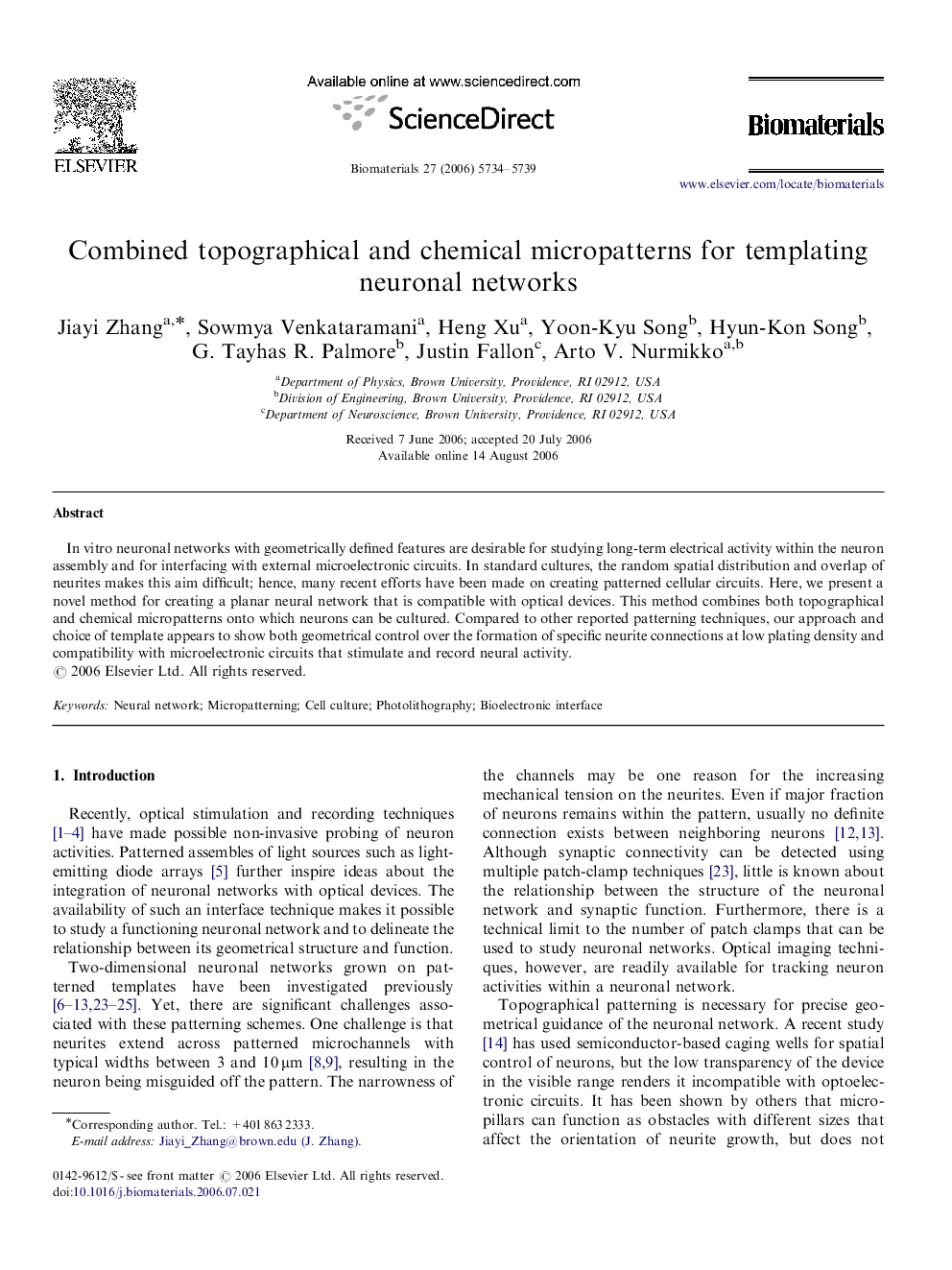| Article ID | Journal | Published Year | Pages | File Type |
|---|---|---|---|---|
| 11223 | Biomaterials | 2006 | 6 Pages |
In vitro neuronal networks with geometrically defined features are desirable for studying long-term electrical activity within the neuron assembly and for interfacing with external microelectronic circuits. In standard cultures, the random spatial distribution and overlap of neurites makes this aim difficult; hence, many recent efforts have been made on creating patterned cellular circuits. Here, we present a novel method for creating a planar neural network that is compatible with optical devices. This method combines both topographical and chemical micropatterns onto which neurons can be cultured. Compared to other reported patterning techniques, our approach and choice of template appears to show both geometrical control over the formation of specific neurite connections at low plating density and compatibility with microelectronic circuits that stimulate and record neural activity.
